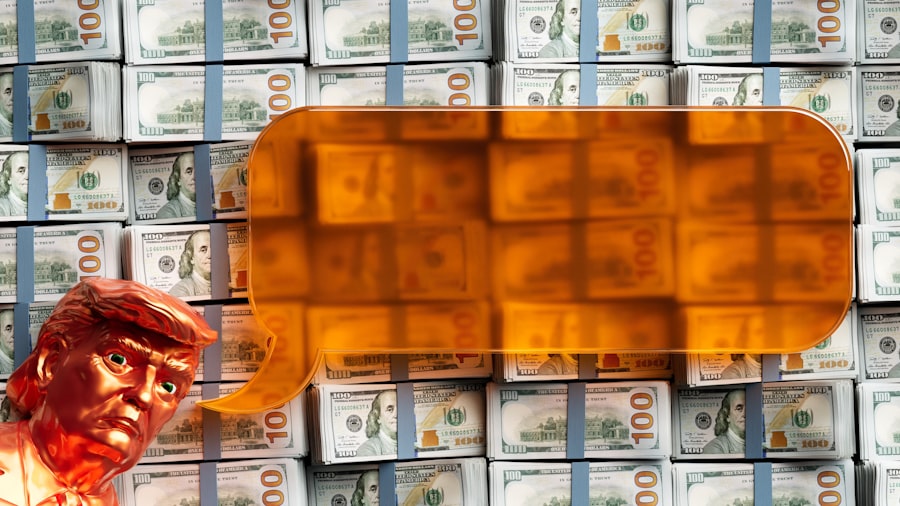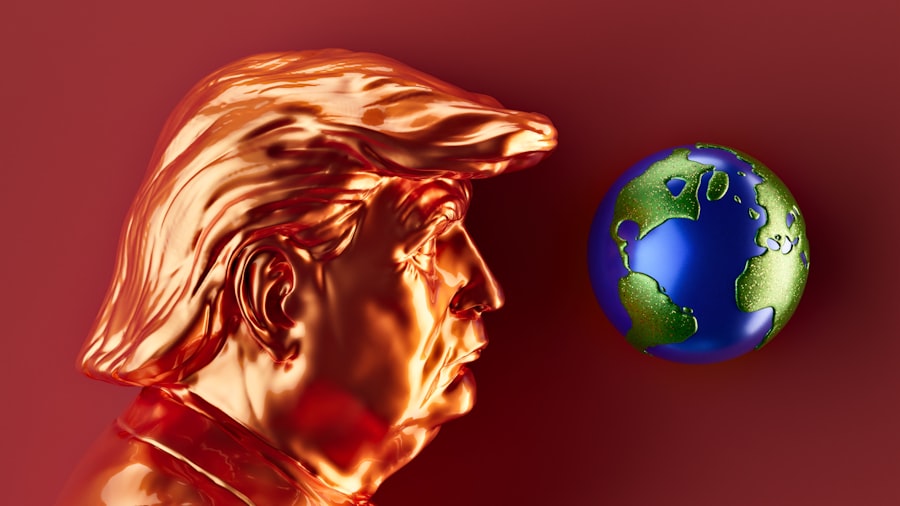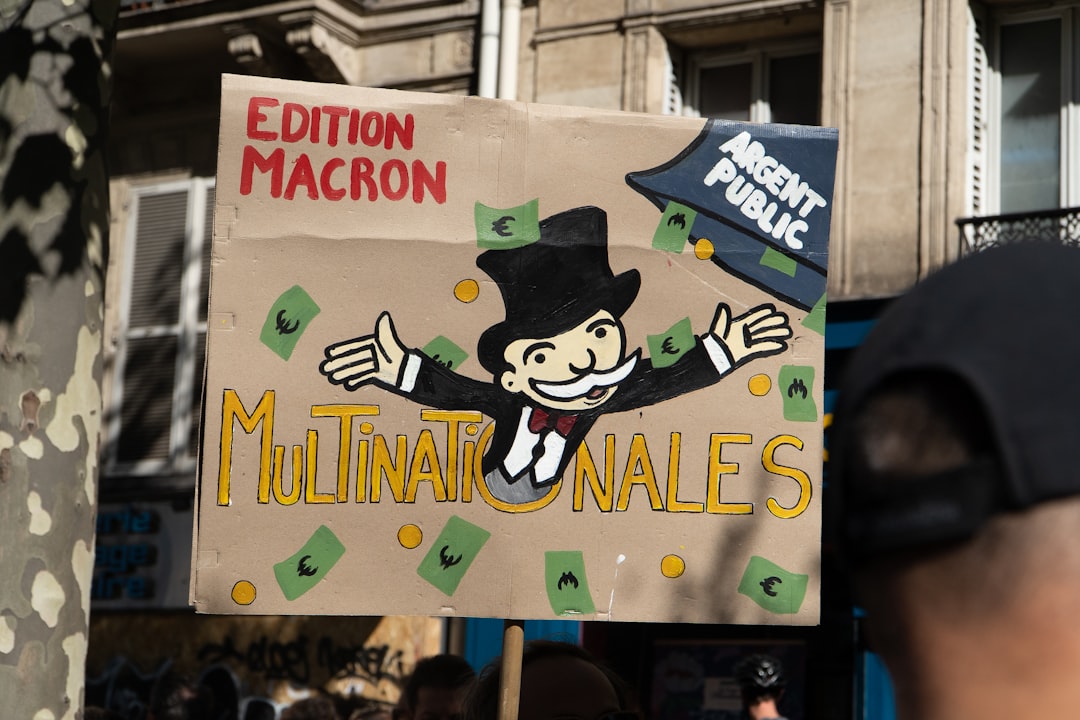As you delve into the intricate world of U.S. economic policy, you will discover a landscape shaped by historical events, political ideologies, and social movements. Economic policy in the United States has evolved significantly over the centuries, reflecting the changing needs and aspirations of its citizens.
From the early days of the republic to the complexities of the modern economy, these policies have aimed to foster growth, stability, and equity. Understanding this evolution is crucial for grasping how current economic conditions and future trends may unfold. The significance of economic policy cannot be overstated; it influences everything from job creation and inflation rates to social welfare and international trade.
As you explore the various phases of U.S. economic policy, you will see how decisions made by policymakers have far-reaching implications for individuals and communities across the nation. This journey through history will illuminate the successes and failures of different approaches, providing valuable insights into the ongoing debates surrounding economic governance today.
Key Takeaways
- US economic policy has evolved significantly over time, with different administrations implementing various strategies to address economic challenges.
- Early economic policies in the United States focused on promoting industrialization and protecting domestic industries through tariffs and subsidies.
- The New Deal and the Great Depression marked a shift towards government intervention in the economy, with the implementation of social welfare programs and regulations to stabilize financial markets.
- Post-World War II economic policy emphasized international trade and investment, leading to the establishment of global economic institutions like the IMF and World Bank.
- The Reagan era introduced supply-side economics, emphasizing tax cuts and deregulation to stimulate economic growth, while subsequent administrations have grappled with economic globalization and income inequality.
Early Economic Policies in the United States
In the formative years of the United States, economic policy was largely influenced by the agrarian nature of society and the need for a stable financial system. The founding fathers recognized that a robust economy was essential for national security and prosperity. You will find that Alexander Hamilton, as the first Secretary of the Treasury, played a pivotal role in shaping early economic policy.
His vision included establishing a national bank, assuming state debts, and promoting manufacturing to create a diversified economy. As you examine these early policies, it becomes clear that they laid the groundwork for future economic development. The establishment of tariffs to protect nascent industries and the promotion of infrastructure projects like roads and canals were crucial in fostering trade and commerce.
However, these policies also sparked debates about federal versus state power and the role of government in regulating the economy, issues that continue to resonate in contemporary discussions.
The New Deal and the Great Depression

The Great Depression marked a turning point in U.S. economic policy, as the nation faced unprecedented economic turmoil. You will find that President Franklin D.
Roosevelt’s New Deal was a response to this crisis, aiming to provide relief, recovery, and reform. Through a series of programs and initiatives, Roosevelt sought to stabilize the economy and restore public confidence. The establishment of Social Security, unemployment insurance, and various job creation programs were designed to support those most affected by the economic downturn.
As you explore the New Deal’s impact, you will see that it fundamentally reshaped the relationship between government and the economy. The federal government took on a more active role in regulating markets and providing social safety nets. While some critics argued that these policies expanded government overreach, many Americans viewed them as essential lifelines during a time of despair.
The New Deal’s legacy continues to influence contemporary economic policy debates, particularly regarding the balance between government intervention and free-market principles.
Post-World War II Economic Policy
| Policy | Description |
|---|---|
| Marshall Plan | An American initiative to aid Western Europe, in which the United States gave over 12 billion in economic support to help rebuild Western European economies after the end of World War II. |
| Bretton Woods Agreement | An international monetary agreement signed in 1944 that established the International Monetary Fund (IMF) and the World Bank, and set up a system of fixed exchange rates. |
| Keynesian Economics | An economic theory advocating active government intervention in the economy to maintain economic stability and full employment. |
| European Economic Community (EEC) | An organization created in 1957 to promote economic integration among its member states, leading to the formation of the European Union. |
Following World War II, the United States experienced an economic boom that transformed its position on the global stage. You will discover that this period was characterized by a commitment to full employment, rising wages, and increased consumer spending. The GI Bill played a significant role in this transformation by providing veterans with access to education and housing, which fueled a burgeoning middle class.
During this time, economic policy also focused on international cooperation and trade. The establishment of institutions like the International Monetary Fund (IMF) and the World Bank reflected a commitment to global economic stability. As you analyze this era, you will see how policies aimed at promoting domestic growth were intertwined with efforts to foster international alliances.
This dual focus laid the foundation for an interconnected global economy that would shape future U.S. economic strategies.
The Reagan Era and Supply-Side Economics
The 1980s ushered in a new approach to economic policy with President Ronald Reagan’s implementation of supply-side economics. You will find that this philosophy emphasized tax cuts, deregulation, and free-market principles as means to stimulate economic growth. Reagan believed that reducing taxes on businesses and individuals would incentivize investment and job creation, ultimately benefiting all layers of society.
As you explore this era further, it becomes evident that supply-side economics sparked intense debate among economists and policymakers. Proponents argued that it led to significant economic expansion during Reagan’s presidency, while critics contended that it exacerbated income inequality and increased national debt. The legacy of Reagan’s policies continues to influence contemporary discussions about taxation and government spending, as many still grapple with the long-term effects of this economic philosophy.
The Clinton Administration and Economic Globalization

The 1990s marked a period of significant economic transformation under President Bill Clinton’s administration, characterized by globalization and technological advancement. You will find that Clinton’s policies focused on free trade agreements like NAFTA (North American Free Trade Agreement), which aimed to enhance trade relations with Canada and Mexico. This era saw an increase in international trade and investment, reshaping industries across the nation.
As you analyze this period, it becomes clear that while globalization brought about economic growth and job creation in some sectors, it also led to job losses in others due to outsourcing and competition from abroad. The Clinton administration’s emphasis on fiscal responsibility resulted in budget surpluses for the first time in decades, but it also raised questions about how to balance growth with equitable distribution of wealth.
The Great Recession and the Obama Administration
The Great Recession of 2008 marked another critical juncture in U.S. economic policy, leading to widespread financial instability and unemployment. You will find that President Barack Obama inherited an economy in crisis and implemented a series of measures aimed at recovery.
The American Recovery and Reinvestment Act sought to stimulate growth through infrastructure investments, tax cuts, and social programs designed to support struggling families. As you explore Obama’s policies further, you will see how they aimed not only to stabilize the economy but also to address systemic issues within financial institutions. The Dodd-Frank Act was enacted to regulate Wall Street and prevent future crises by increasing oversight of financial practices.
While these measures faced criticism from various quarters, they represented a significant shift toward greater government intervention in response to market failures.
Trump’s Economic Policies and Trade Wars
The election of Donald Trump in 2016 brought about a dramatic shift in U.S. economic policy characterized by an “America First” approach. You will find that Trump’s administration focused on tax cuts through the Tax Cuts and Jobs Act, which aimed to stimulate growth by reducing corporate tax rates.
However, his tenure was also marked by contentious trade wars with countries like China, as he sought to renegotiate trade agreements perceived as unfavorable. As you analyze Trump’s policies, it becomes evident that they sparked intense debate regarding their long-term implications for both domestic industries and international relations. While supporters argued that these measures revitalized American manufacturing jobs, critics contended that they led to increased prices for consumers and strained diplomatic ties.
The impact of these policies continues to be felt as discussions about trade relations evolve in an increasingly interconnected world.
The Biden Administration and Economic Recovery
In 2021, President Joe Biden took office amid ongoing challenges stemming from the COVID-19 pandemic and its economic fallout. You will find that his administration prioritized recovery through significant stimulus measures like the American Rescue Plan, which aimed to provide direct financial assistance to individuals and support for businesses affected by the pandemic. This approach reflects a renewed emphasis on government intervention as a means of addressing immediate economic needs.
As you explore Biden’s policies further, you will see how they also focus on long-term investments in infrastructure, clean energy, and healthcare as part of a broader strategy for sustainable growth. The administration’s commitment to addressing income inequality through initiatives like raising the minimum wage has sparked discussions about balancing economic recovery with social equity. These debates are likely to shape future policy directions as America navigates its post-pandemic landscape.
The Impact of Economic Policy on Income Inequality
Throughout history, U.S. economic policies have had profound effects on income inequality within society. As you reflect on various administrations’ approaches—from FDR’s New Deal to Reagan’s supply-side economics—you will notice patterns that reveal how different strategies have either mitigated or exacerbated disparities in wealth distribution.
For instance, while some policies aimed at broad-based growth have lifted many out of poverty, others have disproportionately benefited wealthier individuals or corporations. You may find it particularly striking how recent discussions around income inequality have gained momentum amid rising awareness of systemic injustices within the economy. Policymakers are increasingly recognizing that addressing income inequality is not just a moral imperative but also essential for fostering sustainable economic growth.
As you consider future trends in U.S. economic policy, it is clear that finding solutions to this pressing issue will remain at the forefront of national discourse.
Future Trends in US Economic Policy
Looking ahead, you can anticipate several key trends shaping U.S. economic policy in the coming years. One significant area of focus is likely to be climate change and sustainability as policymakers grapple with balancing economic growth with environmental responsibility.
You may observe increased investments in renewable energy technologies and infrastructure aimed at reducing carbon emissions while creating jobs in emerging industries. Additionally, as technology continues to evolve rapidly, discussions around digital currencies, data privacy, and automation will likely influence future economic strategies. Policymakers may need to address challenges posed by technological advancements while ensuring equitable access to opportunities for all citizens.
S. economic policy will continue to adapt in response to both domestic needs and global challenges. In conclusion, your exploration of U.S.
economic policy reveals a complex tapestry woven from historical events, ideological shifts, and societal changes. By understanding this evolution—from early policies through contemporary debates—you gain valuable insights into how past decisions shape current realities and future possibilities for America’s economy.
The history of U.S. economic policy is a complex tapestry woven through decades of legislative changes, market shifts, and global influences. A related article that delves into this intricate history can be found on HeyDidYouKnowThis, which provides insights into the pivotal moments and figures that have shaped the economic landscape of the United States. For a deeper understanding of these historical economic policies, you can explore the article by visiting this link. This resource offers a comprehensive overview of the economic strategies and decisions that have influenced the nation’s growth and development over the years.
WATCH IT HERE! 💰 The Secret History of the Dollar: How Oil Replaced Gold (The Petrodollar Mystery)
FAQs
What is the history of US economic policy?
The history of US economic policy refers to the various approaches and strategies that the United States government has implemented to manage and regulate the country’s economy over time.
What are some key milestones in the history of US economic policy?
Some key milestones in the history of US economic policy include the establishment of the Federal Reserve in 1913, the New Deal policies of the 1930s, the implementation of supply-side economics in the 1980s, and the response to the 2008 financial crisis.
How has US economic policy evolved over time?
US economic policy has evolved from a more hands-off approach in the early years of the country to a more interventionist and regulatory approach in response to economic crises and changing economic conditions.
What are some major economic policies that have shaped the US economy?
Some major economic policies that have shaped the US economy include monetary policy, fiscal policy, trade policy, and regulatory policies aimed at addressing issues such as inflation, unemployment, and economic growth.
How has US economic policy impacted the country’s economy?
US economic policy has had a significant impact on the country’s economy, influencing factors such as economic growth, employment levels, inflation, and the overall stability of the financial system.
